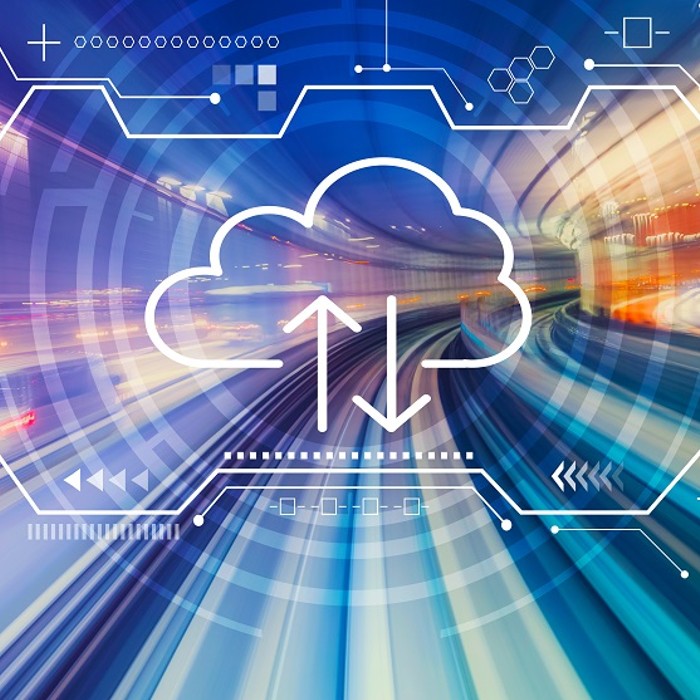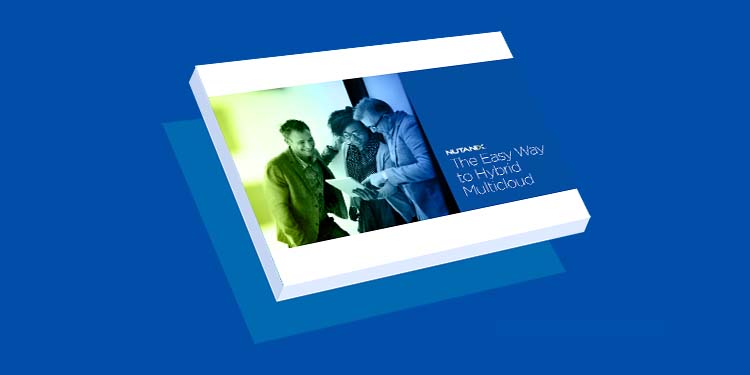You could only get the value from your mainframe because standard software wasn't around, you had to build your own software. And today the cloud, as a single cloud, as a multicloud is like the mainframe. The applications for that, the best practices of the 21st century have not yet been established.
This translation doesn't have to have many more because for the first time we live in this era of infinite computing, compute is cheap and plentiful. And this means we can tackle business process in a totally different way than the previous world, where it was finite computing, where you would size the IT to a certain business problem, which you would then translate into software. And this change means you have to have much, much more developers to own your own automation, destiny, and to be ready to automate things. And standard software will not have the answer because standard software needs to have the same solution by hundreds, if not thousands of companies, it's really, really hard for the SAPs, the Oracles, the work takes the sales forces to build the next generator software now, because they don't know how their users will use the cloud.
But now the reaction times of somebody's changing your industry by being better, faster, smarter, closer to the customer, closer to the employee that is three months, six months, right? So everything is moving much faster. And if you miss building your own software, you're probably not in business in five years anymore.
Moving to the cloud is extremely crucial for enterprise because once a board realized, do we need this big headquarter? How many seats do we need it quickly goes down the list and say, Hey, why do we need this data center? Why do we have this mainframe as an example, this big cost line item. And then the other thing is of course, companies realize not just moving to the cloud, but they've moved too many clouds. So multi-cloud is a reality for almost all organizations and now CIOs with rising bigger budgets, but shrinking budgets on the flip side for what they have to do, have to figure out a way, how to make it all work. You basically don't want to get tied with certain cloud providers. So you want to have this workload portability. You want to be able to commit to run something on a certain cloud, a then, then move to the other cloud driven a and then maybe to the cloud with G and maybe you want to run on all of them. And maybe they open data centers in different locations because data still matters. And data residency matters, all legislation or data residency and privacy has to be reflected. That leads to massive, uh, fragmentation of data and processing. Even if you have a modern application. And even if you're happy to run in single cloud. So complexities on the rise and CIOs are struggling for anything which can make their life simpler.
That requires something from the platform, which I call identicality to move the workload from A to B, I need to have the same technology, the same APIs, the same tech stack, like the same authorizations, right? I can't recreate all the authorizations of people when I move from one cloud to another cloud and all of that. I want to manage in a single pane of glass. And I wanna see this in one location. I wanna see if something is wrong. I want to be able to move that. So that's really what CIOs are implementing, looking for and searching now.
Luckily larger vendors is one of them allows this third party view over the different clouds and to allow this virtual portability across their platform maintained by the software vendor. So I pay for it. Of course, it's sassification of platform, which you see as a general trend right now,
Data fragmentation and process fragmentation is pretty much reality, which happened by accident basically because no single cloud was good enough for everything. And no CIO had enough control about the lines of business of them saying, Hey, I want a marketing solution. It doesn't matter which clouded ones we need to survive. Uh, that fragments, all the data creates lots of questions because the fragmentation and the data gravity are very expensive things to solve.
My prediction. As we sit here in half of 2022, is that that will get reduced by data being in one place for inside perspective. And for AI machine learning perspectives, the one place will lead to a more consolidation of the number of environments that an enterprise will have, but it will not be one that will be again, multiples.
The trick was basically telling all these country managers, well, you can keep your existing instance, right? You have the freedom to do that, but you keep paying for it. If you go to the global instance, we'll pay for it that, uh, made the staunchest skeptics very quickly move over because nothing beats free from an automation perspective, you can say, we have the better platform. It's more secure. You can mandate it, right? There's many different ways to get that done, but the central system being free and of course being paid for some other cross payments is the biggest, most successful thing. That's in many other companies, uh, implementing the free central new system approach. So you try to make it hard to go somewhere else.
What looked like great idea two, three years ago, it doesn't look like a great idea today, right? And you can't just throw these systems away and you have to keep operating them. And this creates this zoo in a system landscape of great ideas from a few years ago, which are looking like good or not so good ideas, but you still have to keep the lights on and keep that running.
The good news is there's a lot of next generation computing platforms coming out. The more functionality you offer there, like your abstraction layer from a hypervisor, from a data perspective, from networking perspective, the more powerful they are, because I don't have to go to other parts of the layer and then putting my multiple single product point offering windows together creates a potential Frankenstein monster situation. So suites have always won in the past of, uh, enterprise software history, both in the width and the depth in terms of like bridging across SAR is and past, especially in past and is we see these things coming together very quickly. Um, and the same thing as well for next generation compute platform. So the more functionality and the single pane of glass, the identicality to run multiple clouds, the freedom to run on premises in case you have to, those are all very important things CIOs are looking for when they make these decisions.
Everybody came to that point, Google embraced it more actively, even though Microsoft did with the multi-cloud support. Uh, obviously Microsoft came around, right? And even Amazon said for the first time at their, uh, pre COVID, uh, we invent 2019 said, well, it's software. And obviously there's the traditional hardware vendors, which still are around the Dells, the HPE that's their business, right? To provide the on-prem probability of that. But as next generation computing platform. So the software layer is growing significantly. The HP is a little reluctant, but they will have to come around and support GreenLake software services across the public clouds in a seamless way to become really next generation computing platform.
I can tell you right away, if cloud is relevant, if the CIO was under 45. This was five, six years ago. So now we could say, if the CIO is under 50, uh, he or she will know, I have to deal with this cloud thing. And I better I embrace it now, then later. Over 50, no cloud, everything on premise. So the thinking was, I can retire before that. And I leave this to the young kids to figure out. So this is the three reasons, right? A performance data, residency, privacy, and still don't trust the cloud thing. I'm gonna build another generation of three, four years of hardware. And if my company board goes along and spends the CapEx, here you go.
Many of the complexities we have right now in our environments, there was no IT right. You would buy your main for seven years and it's much, much more complex right now. And then you see turmoil like around the Ukraine, lots of companies to shut down their Russian and Ukraine operations. That's not something which is the DNA of it either, right? I mean, you keep opening stuff. You might be reducing something butn you just don't shut down complete countries and have to make sure that data's out. And that all adds to the overall complexity in uncertainty, which doesn't make it's job easier.







